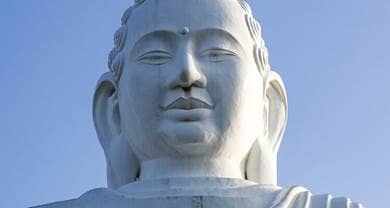- Trending:
- Pope Leo Xiv
- |
- Israel
- |
- Trump
- |
- Social Justice
- |
- Peace
- |
- Love

RELIGION LIBRARY
Mahayana Buddhism
Mahayana Buddhism, also known as the Great Vehicle, is the form of Buddhism prominent in North Asia, including China, Mongolia, Tibet, Korea, and Japan. Arising out of schisms—about both doctrine and monastic rules—within Indian Buddhism in the first century C.E., the Great Vehicle considers itself a more authentic version of the Buddha's teachings. The Mahayana accepts the canonical texts of the Theravada tradition (what they derisively call the Hinayana, or "lesser vehicle), but also have a vast corpus of philosophical and devotional texts. The most distinctive teaching of the Mahayana is that the great compassion that is an inherent component of enlightenment is manifest in bodhisattvas (enlightenment beings); these beings postpone nirvana (final enlightenment) in order to assist and guide those beings still suffering in the cycle of rebirths. They employ what the Mahayana calls "skillful means," which is the ability to know the particular mental and emotional capacity of each individual, and to deliver guidance appropriate to those capacities. The Mahayana developed a vast pantheon of bodhisattvas, Buddhas, and other powerful beings, and an complex array of devotional and meditational practices directed toward them. As the Mahayana moved beyond India, it took typically adopted distinct local cultural characteristics; thus the Mahayana pantheon in China is significantly different than that found in India, or that in Japan.
Quick Facts
| Formed | 100 |
| Adherents | 185,000,000 |
| Deity | None / pantheon of deities |
| Sacred Text | Pali, Mahayana Canon |
| Origin | India |
| Headquarters | None |










